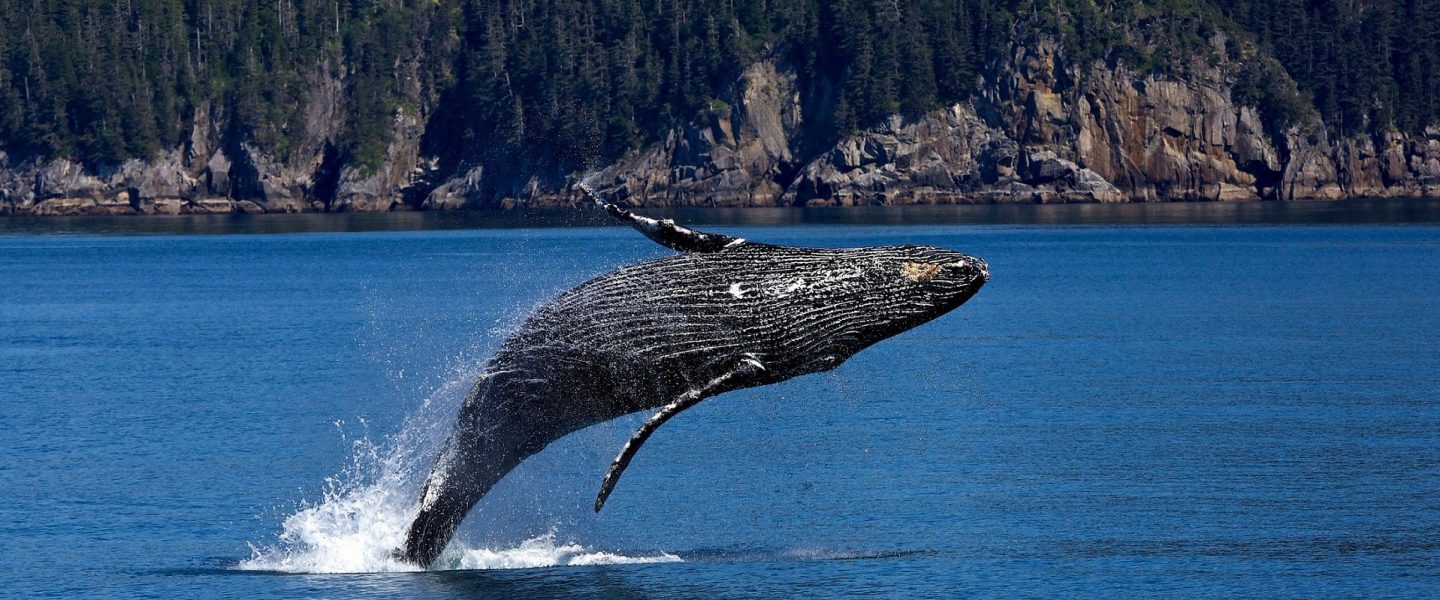PICKS are stories from many sources, selected by our editors or recommended by our readers because they are important, surprising, troubling, enlightening, inspiring, or amusing. They appear on our site and in our daily newsletter. Please send suggested articles, videos, podcasts, etc. to picks@whowhatwhy.org.
California’s Crabbing Season Delayed Again to Protect Humpback Whales (Maria)
The author writes, “Those hoping to snag a Dungeness crab for their Thanksgiving table may find them in short supply this year, after the commercial crabbing season was delayed again in parts of California over concerns for the endangered humpback whales that share their waters. Humpback entanglements in the heavy ropes used by commercial crabbers have been on the rise in recent years, resulting in deaths and injuries to dozens of the imperiled whales. The delay marks the second time state officials have pushed back the commercial crabbing season this year in an effort to reduce entanglements.”
European Thinktank Adds US to List of ‘Backsliding’ Democracies for 1st Time (DonkeyHotey)
The author writes, “The United States has joined an annual list of ‘backsliding’ democracies for the first time, the International IDEA think-tank said on Monday, pointing to a ‘visible deterioration’ that it said began in 2019. Globally, more than one in four people live in a backsliding democracy, a proportion that rises to more than two in three with the addition of authoritarian or ‘hybrid’ regimes, according to the Stockholm-based International Institute for Democracy and Electoral Assistance. ‘This year we coded the United States as backsliding for the first time, but our data suggest that the backsliding episode began at least in 2019,’ it said in its report.’”
Nasa Wants to Defend Earth From Asteroids — So It’s Slamming a Spacecraft Into One (Bethany)
From The Verge: “NASA is launching a spacecraft the size of a refrigerator, sending it on a crash course with an asteroid in 2022 — and it’s all on purpose. This intentional self-destruction will tell us if slamming a spacecraft into an asteroid is enough to save Earth in the future if a massive space rock is headed our way. The mission is called DART, or the Double Asteroid Redirect Mission, and its purpose is in the name. The spacecraft is going to try to redirect an asteroid in space for the first time. The idea is pretty simple: DART is going to ram into the object moving at roughly 15,000 miles per hour, transferring its momentum to the asteroid. This body slam should be enough to deflect the asteroid off its original path by a fraction of 1 percent. The asteroid DART is targeting doesn’t pose any threat to Earth, and there’s nothing the mission can do to change that. NASA just wants to see if bumping a space rock well ahead of time could change its direction enough so that over the long-term, it would whiz by a planet safely instead of hitting it.”
This Tribe Helped the Pilgrims Survive for Their First Thanksgiving. They Still Regret It 400 Years Later. (Reader Steve)
The author writes, “Overlooking the chilly waters of Plymouth Bay, about three dozen tourists swarmed a park ranger as he recounted the history of Plymouth Rock — the famous symbol of the arrival of the Pilgrims here four centuries ago. Nearby, others waited to tour a replica of the Mayflower, the ship that carried the Pilgrims across the ocean. On a hilltop above stood a quiet tribute to the American Indians who helped the starving Pilgrims survive. Few people bother to visit the statue of Ousamequin — the chief, or sachem, of the Wampanoag Nation whose people once numbered somewhere between 30,000 to 100,000 and whose land once stretched from Southeastern Massachusetts to parts of Rhode Island. Long marginalized and misrepresented in the American story, the Wampanoags are braced for what’s coming this month as the country marks the 400th anniversary of the first Thanksgiving between the Pilgrims and Indians.”
Europeans in the Americas 1000 Years Ago (Mili)
The author writes, “Columbus was not the first European to reach the Americas. The Vikings got there centuries beforehand, although exactly when has remained unclear. Here, an international team of scientists show that Europeans were already active in the Americas in 1021 AD. The Vikings sailed great distances in their iconic longships. To the west, they established settlements in Iceland, Greenland and eventually a base at L’Anse aux Meadows, Newfoundland, Canada. However, it has remained unclear when this first transatlantic activity took place. Here, scientists show that Europeans were present in the Americas in 1021 AD — precisely 1000 years ago this year. This date also marks the earliest known point by which the Atlantic had been crossed, and migration by humankind had finally encircled the entire planet.”
A New Source of Fuel in an Aging Japan: Adult Incontinence (Dan)
The authors write, “The restorative waters that flow into the public baths in this town near the coast of western Japan originate from hot springs more than two-thirds of a mile below ground. At the surface, before the water bubbles out of the spouts, it is further heated to 107 degrees Fahrenheit — an ideal temperature for cleansing and soaking weary muscles. But unbeknown to most bathers, the boiler heating the water runs on a fuel with the uncleanliest of origins: pellets recycled from soiled adult diapers. In rapidly aging Japan, more diapers are used by older, incontinent people than by babies. As the country groans under the weight of ever-rising mountains of this waste, the town of Houki has become a pioneer in trying to reduce it. By recycling the diapers, which represent about a tenth of the town’s trash, it has diverted garbage that would otherwise be dumped in incinerators and add emissions to the atmosphere.”
To Be Energy-Efficient, Brains Predict Their Perceptions (Sean)
From Quanta Magazine: “How our brain, a three-pound mass of tissue encased within a bony skull, creates perceptions from sensations is a long-standing mystery. Abundant evidence and decades of sustained research suggest that the brain cannot simply be assembling sensory information, as though it were putting together a jigsaw puzzle, to perceive its surroundings. This is borne out by the fact that the brain can construct a scene based on the light entering our eyes, even when the incoming information is noisy and ambiguous. Consequently, many neuroscientists are pivoting to a view of the brain as a ‘prediction machine.’”
He Always Wanted a Ph.D. in Physics. He Finally Earned It at 89 (Dana)
The author writes, “Manfred Steiner had a successful and productive career as a doctor, helping generations of medical students learn about hematology. But all along, he had a nagging feeling he should be doing something else: studying physics. At age 89, he has finally fulfilled that dream, earning his Ph.D. in physics from Brown University. ‘It’s my third doctorate, but this one I really cherish a lot. That I made it — and made it at this age,’ said Steiner, who is weeks from turning 90.”



